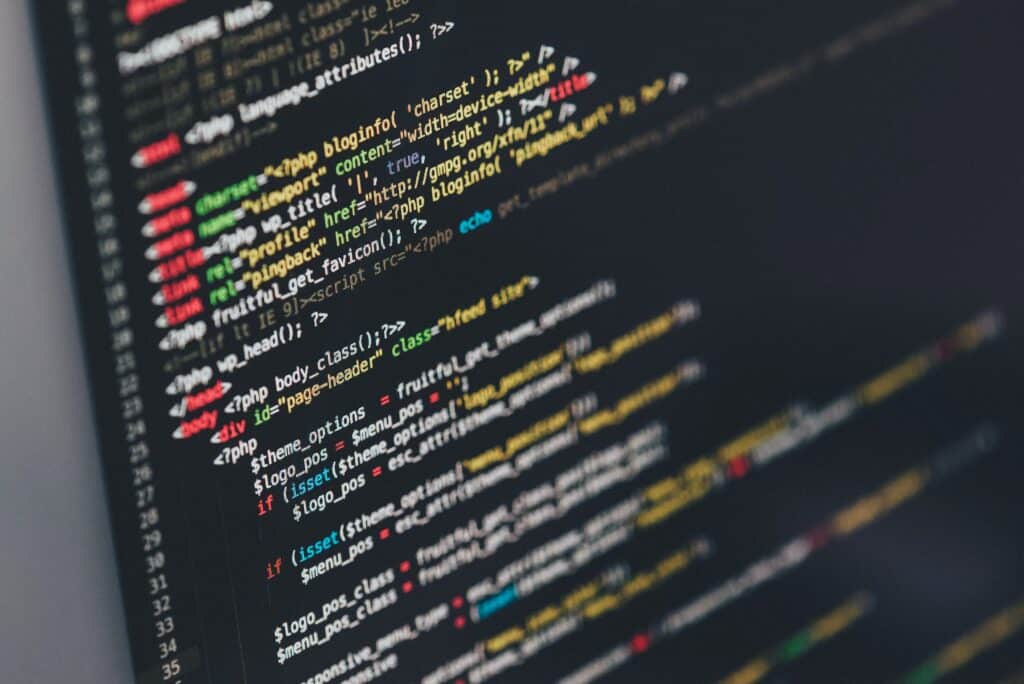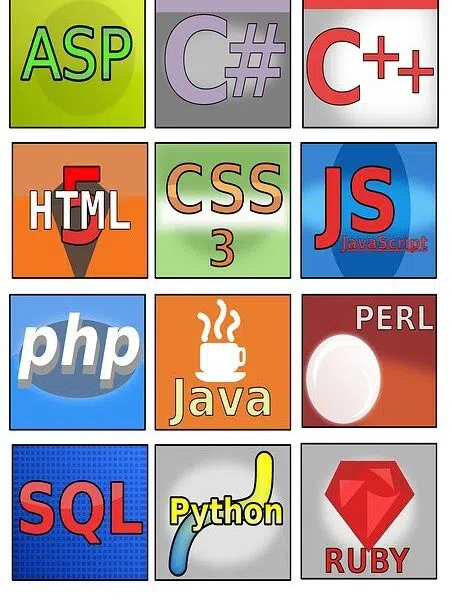When you purchase through links on our site, we may earn an affiliate commission. Here’s how it works.
Coding for Kids – Overview
Coding for kids is more crucial than ever. Our daily lives have become reliant on technology. As a result, coding has grown in importance as a second language for children and adults.
But, parents may find it difficult to teach programming to their children if they have no prior knowledge.
There are many tools available to assist parents in bridging that gap and providing a positive learning environment for their children.
Various online code programs for children provide the essential framework for them.
Many children’s programming lessons and a plethora of free coding games can assist children in learning programming skills.
So, continue reading to learn more about coding: it is good or not, its benefits, ways to learn it, and a lot more. Let’s get started.
Coding for Kids – What is It?
Coding for kids refers to how kids can learn to code. These opportunities intend to be entertaining and gamified to keep children’s minds excited.
“Programming” or “computer programming” is the same term as coding.
While it may be impossible to believe, a kid can learn anything. Thanks to the many coding summer camps, websites, tutors, and after-school programs available, coding may become a reality for children.
Coding is not always the same as traditional “computer science,” which you or your children may instinctively avoid.
Coding is the language humans use to communicate with computers and the language people use to create and run websites, coding apps, games, and other applications.
This communication takes place in a variety of languages, including:
Scratch – A visual coding environment with drag-and-drop functionality.
Python – A beginner-friendly programming language.
Java – The programming language used in the AP Computer Science exam.
C++ – A programming language used to create software, write games, and more.
Coding for kids may initially sound a bit challenging for the parents.
As a parent, you should always remember that this is about developing a hobby and not teaching your kids to develop complex functionality quickly.
Your kid will be more likely to engage in coding if the environment and equipment are set for fun. So, looking at the best laptops for kids would be the right place to start.
Coding for Kids – Is Coding Good for Kids?
The minds of children are malleable and adaptable. They can learn and retain information quickly. Using platforms that enable kids to create projects such as animations and games is a great way to start coding early. (1)
Children who are exposed to coding at a young age learn to assess topics critically. They investigate various viewpoints, invent solutions, and employ the trial-and-error learning method.
The earlier children learn to code, the easier it will be for them to master it, along with the other skills that coding fosters.
Some of the abilities are as follows:
- Coding Develops Logical and Analytical Thinking
Kids can learn to code to improve their logic, reasoning, and critical thinking skills.
A positive association between programming and cognitive ability has been discovered in several recent types of research.
According to the conclusion, students who knew how to code scored higher on cognitive ability tests than those with little to no programming expertise.
Also, computer programming could be beneficial to cognitive growth.
Children are taught to break down big problems into smaller and manageable pieces to create functional scripts.
This refers to decomposition and it is a valuable skill that students find incredibly useful in real-life situations too.
It doesn’t end with decomposition, either. Because coding and problem-solving are so similar, youngsters who code have an edge in learning this skill.
A programmer must (a) identify the problem, (b) analyze it, (c) and come up with a viable solution. On ending (d) test it, and (e) repeat the process if the problem is not solved.
As children begin to code, they become more familiar with the process and finally go comfortable doing it.
The more they do it, the more it becomes second nature, which ultimately helps prepare children for the future.
- Coding Encourage Focus and Creativity
Many people don’t associate computer programming with creative thinking since it appears to be so technical — especially given how meticulous and rigorous the act of coding can be.
However, programmers are fully aware that coding may foster creativity.
When you are learning to program from the ground up, you will need to think creatively.
Consider this: children who can code can create apps, games, animations, websites, and more.
They can develop interactive content by copying and pasting lines of code (or snapping together some blocks, seeing as block coding is a popular choice of coding for kids).
Nonetheless, it is their imagination that provides the pattern for that material.
When children learn to code, their attitudes about digital media and technology get mature. They may get ideas for their project whenever they try out new software or play a new video game.
They could be looking at an online fighting game and thinking, “What if this was an adventure game instead?” And since they know how to code, they can easily turn their thoughts into reality.
Coding might be a good way for them to express themselves creatively. Some children enjoy drawing. Some kids sing or play an instrument, while others code.
This creativity necessitates a certain level of concentration. When children write code for a program, they must consider all parts.
- Coding Support Self-confidence and Flexibility
If you have ever tried coding (or even just watched some), you know how exactly it can be, especially regarding text-based coding!
While block coding is forgiving, text-based coding necessitates flawless syntax. An unnecessary comma or semicolon is enough to make a script unusable.
As the scripts become more complex, the tedious process of developing, running, debugging, re-writing, and rerunning the code becomes second nature.
And nothing beats this for teaching patience and flexibility.
Furthermore, compared to children who do not code, they do not tend to be more confident in their decisions.
Writing successful, workable scripts is challenging, but it’s even more difficult when constantly second-guessing yourself.
As a result, young coders learn to be confident in their decisions. Their ability to bounce back after a series of setbacks is truly inspirational.
The self-assurance they finally gain crosses over into many aspects of their lives (both social and personal).
Why is Coding Important?
Below is an explanation of different reasons why coding is important.
- There is a significant demand for programs.
According to Code.org, computing accounts for 67% of all new jobs, while only 11% of graduates major in computer science. There is a severe scarcity of computer science majors.
- Coding gives you a step up on the competition when applying to institutions, internships, and jobs:
You instantly appear more attractive in the eyes of potential college admissions officers and employers if you have a hot skill that many of your peers lack – such as the ability to code. It’s that simple!
- Students gain a greater understanding of the world around them by learning to code.
The majority of people have no idea what makes cell phones, laptops, social media networks, or video games work. Basic programming skills can change how a person uses (and acknowledges) technologies and open our eyes to endless coding opportunities.
- It is fun to code.
While programming is a coding-based hobby, it is also a creative one. You can create apps, code, games, websites, and more with the necessary skills.
Part of the pleasure of coding for many developers is the challenge and satisfaction of seeing their code come to life after a successful debugging session. Don’t deceive; learning to program can be simple and enjoyable with the correct education.
- Coding helps with creativity.
Learning a new language enables you to display yourself. The same is said about programming.
Computer coding enables children to consume and create digital media technologies. They can consider making their own app instead of playing a video game or utilizing an app. And, they have a way of expressing themselves.
As a result, it is not necessarily about the direct benefits of computer science. There are a plethora of advantages to getting involved with coding.
- Coding helps to enhance persistence.
Like any new discipline, learning to code is a challenge. It can be frustrating to tackle a complex problem and make mistakes along the way.
Codification teaches you to maintain the valuable ability to cope with such problems. These highly desirable skills develop by learning to solve problems and seek solutions through research and collaboration.
- Enhance communication coding
Communication through schoolwork and life is an essential ability. Individuals who can communicate complex ideas tend to succeed in different industries.
When children learn to code, they communicate with the simplest imaginable audience: computers.
As already mentioned, computer code teaches children how to break up complex ideas and arrange them to understand the computer.

Coding for Kids – The Right Age to Learn Coding
What is a Good Age for a Kid to Learn to Code?
As per Swiss psychologist Jean Piaget’s cognitive development theory, the pre-operational age of children is 5 years.
A child at this age starts to understand the world through words and images through mental representations.
Following that theory, many experts agree that children can start to code at age 5 because of the more advanced accessibility of educational instruments and technologies.
Now, some parents might be afraid of this age. Many don’t want to risk introducing their children to coding prematurely. And that is the concern everybody understands.
Traditional coding is a new language for a kid. Children learn to talk at different paces. Some kids take communication like a piece of cake.
On the other hand, it is hard for others to express themselves verbally.
So, it can be overwhelming and counterproductive to teach children to code when they can hardly speak the human language.
Another option is to complicate text-based coding — there are many numbers, sequences and syntactic elements involved. It could be tough to teach a child about loops, functions and requirements when they cannot count to 20.
But, did you know that there are some exciting ways to make coding more kid-friendly?
Many applications and websites teach children to code through block coding. The visual code blocks are incorporated into fun, colorful games that typically involve children and educate them.
Block and lively visuals in a game setting make programming much less intimidating.
Moreover, recent psychological studies show that children younger than 7 years of age can learn more than one language quickly.
Since computer programming is a vernacular thing, it is not too long to believe that a 5-year-old can learn it perfectly, too.
Below are some of the interesting ways to indulge in coding in kids’ lives.
How to Interest Your Kids in Learning Coding?
You probably won’t have to do anything to persuade a child if they are already interested in programming, coding and game/app development.
In addition, you could agree on finding online coding courses (in terms of budget, curriculum, schedule, and so on).
However, you can pick their interest in certain ways when your child does not seem excited about Computer science.
Combine it with your passion.
As mentioned, coding might be used to make younger audiences more engaging. You can use the same concept to motivate your children to encode because of the versatile beauty of coding.
Here are some ways in which coding can be executed in various hobbies:
Video Games- Children who love computers and mobile games might want to make these apps themselves. Avid game players can learn basic programming skills through the popular Minecraft and Roblox computer games.
Drawing/Painting- If your kid loves drawing, you can teach them tools to make their artistic creations come alive!
Scratch, for example, is a children’s s-friendly coding platform for children to create interactive stories, games, and animations in the block-based Scratch programming language.
Children can use the platform to personalize their projects and upload their backgrounds and characters (Sprites).
Robots- There are plenty of codes for children’s kits when your child is in robots. A programmable robot is involved.
Building- LEGO remains one of the best toys for young builders and tinkerers. The ability of LEGO to be customized according to demand is amazing.
So, review any LEGO Boost Creative Toolbox to teach children to use preferred blocks to code concepts. See also Electronic Toys for Kids

Coding for Kids – Read the FAQs before Making a Decision
Additional FAQ’s
What is the perfect way to teach coding to children?
They can learn to code independently because most children these days are tech-savvy. Many programmers are self-teaching (both young and old),, but this is a rather slow path.
And, if you don’t have one-on-one support immediately, it can be quite frustrating. So, while self-taught coding is likely, it isn’t advice.
Rather, here are some practical options for learning:
- Curriculum Bootcamps
- School Education/School
- Online Coding Academies
- Private Tutors/Lessons
How to Choose the Best Coding for Kids?
Many online coding classes for kids are now available to learn to code. These programs, including games, jigsaws, web development, etc., provide various excellent techniques to improve your Child’s coding skills.
It isn’t very clear for parents to find the best from various coding programs available for children.
It needs to analyze its potential and diverse dimensions to find the best coding program.
You can select a coding program that gives your child the best learning results. These criteria ensure that your child receives optimal learning and a fun coding journey.
Speaking of the best coding courses for children.
Choosing Best Coding for Kids – Key Points to Remember
1. Value
There are many coding programs for children, from free to paid. The first thing to do is determine the amount you want to put in the coding program for your child.
It may vary depending on the Child’s needs and age. You can select elementary children’s block-based program coding and older children’s text coding programs.
2. Access
Considering ongoing practice is the best way for children to develop skills, they need to access the platform for these skills to practice. Ensure you have access to wide-ranging practical activities under the coding program.
3. Creativity
Encourage children to promote their creativity through the coding program. The best coding program offers children a variety of ways to demonstrate their creativity. There is no scope for children to learn something new if every project produces the same results for every student.
4. Active Education
As active learning promotes children to learn better and understand concepts, choosing an actively learning coding program is advisable.
Child coding and puzzles are popular learning activities for children. A quality coding program offers children a wide range of opportunities to work and practice coding projects.
5. The relationship between student and teacher
If the learning program offers interactive classes, the size of the class should be considered. Class size is directly related to a child’s care.
Consider this tip while choosing a coding program because it has a huge impact on a child’s learning.
6. Curriculum
A quality code program provides an overview of several languages and technologies. A program covering nearly all languages and learning styles is the best choice for a child.
It makes it ideal for children, from block code-based to text-based coding, to gradually acquire code abilities.
7. Age suitability
Choosing an old-fashioned program will help a child learn better — age-appropriate format.
A good coding program offers courses that increase the rigor and challenge of the children’s learning and development.
This program, which provides the fundamental basis for understanding various coding concepts, is best used to optimize a child’s learning.
8. According to child interest
Talk to your child about what program will best fit them before you choose a coding program.
You can choose the program that best fits you and offers maximum learning, depending on your interest in learning, such as web development or game coding.
What is the best programming language for kids?

Coding for Kids – the best programming language for kids
“Best” is a pretty subjective term. But, some programming languages are more child–friendly than block-based coding languages, for instance, Scratch or Blockly.
Most experts agree that coding the visual blocks is one of the best ways for children to start programming. It reduces the need for technical memorization, enabling kids to focus solely on the basics.
However, while this approach is good for children between 5 and 7, or older, more experienced children will be bored or inspired soon by block coding limitations.
They might quickly want to taste the “real thing,” and the “real thing” coding is text-based.
Here is, in this context, a brief list of simple (compared to other) text-based programming languages which will not be overwhelming as follows:
C++

Coding for Kids – C++
Many computer scientists and developers differ as to whether or not a kid should start with C++. This language can look a bit like mathematics and could put students away from code learning.
However, C++ can open many gates to the world of programming once the fundamentals of programming are understood. Many of today’s leading programmers have begun to learn to code with either C or C++.
Scratch
Scratch is a free online language if your kids are interested in creating animations, interactive stories, art, or music.
Although this language is simple enough for children, even experienced programmers have enough functionality and options.
Scratch has an interactive online community in which people share their works and games, and their students are more involved.
Python
Python is a language that reads like ordinary speech. One hardly ever has to add comments to the code, as the Python code is written well enough, so comments seem to be included.
If your children or students are going to learn to code, you want them to understand how to think like a programmer.
With Python, learning how to program will not be difficult for students. Children learn to build an idea in their minds that machines can interpret and then transfer into instruction.
The philosophy of Python also refers to the enormous volume of material that is done simply by searching and using core Python libraries.
Many of the common features programmers need in the programming language are already integrated and are great for children.
Ruby
For novice programmers, Ruby has the most readable syntax, which makes it easier to learn to code for kids.
Instead of spending much time explaining the code students type in machines, this is much like self-explaining. For children still learning programming concepts, this is an important factor.
Kids will have to learn concepts for writing good scripts. The Ruby language is robust. It was initially used to create Twitter and is now used on popular platforms.
Java
Java is a bit more difficult to learn than Ruby or Python, but it will be easier for students to study any subsequent language if they choose Java as their first programming language.
Many students are considering creating their websites or apps but simply don’t know where to start.
There are so many online sources, toolkits, and classes defining that almost everything can be made with Java from scratch. Some first hurdles need to be overcome, for example, the installation of JDK and how syntaxes work.
However, object-oriented programming language configuration makes progress easy for students. Java looks like C and C++, but it provides more features, allowing students to create robust programs.
As a parent or mentor, it’s important to know that each language has its advantages and drawbacks.
The key is that your child should learn about the concepts behind programming, for instance, the logic behind the code, how to use constructs, and other tricks of the trade.
Conclusion
Whether you agree with it or not, coding has become the 21st-century language. Children, teens and even young adults have become a basic literacy that they can benefit from knowledge.
Think about it; we depend on the intelligence of our machines, smartphones, laptops, security systems, etc.
With such technologies, we should not know how to communicate with them as a permanent element in our lives.
Children’s coding is not an optional activity anymore. It would be best if they had a basic understanding of this skill — otherwise, your peer’s risk being left behind.
See Also